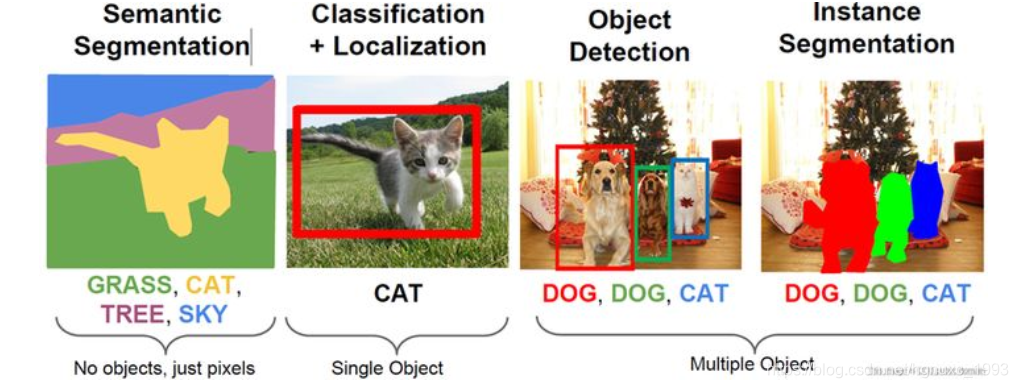YOLO与神经网络的应用实践:从图像识别到自动驾驶的实战案例
发布时间: 2024-08-17 19:06:48 阅读量: 8 订阅数: 17 


# 1. YOLO算法与神经网络基础
### 1.1 YOLO算法简介
YOLO(You Only Look Once)是一种实时目标检测算法,由Joseph Redmon等人于2015年提出。与传统的目标检测算法不同,YOLO将目标检测视为一个回归问题,一次性预测目标的位置和类别,极大地提高了目标检测的速度。
### 1.2 神经网络基础
神经网络是一种受人脑启发的机器学习模型,由多个层级结构的神经元组成。每个神经元接收输入数据,并通过激活函数输出一个值。神经网络通过训练数据学习复杂模式,并可用于各种任务,如图像识别、自然语言处理和预测。
# 2. YOLO算法的实践应用
### 2.1 图像识别中的YOLO应用
#### 2.1.1 YOLO算法的原理和实现
YOLO(You Only Look Once)算法是一种单阶段目标检测算法,它将图像识别任务转化为一个回归问题。与传统的两阶段目标检测算法不同,YOLO算法只需一次卷积神经网络前向传播即可预测图像中的所有目标及其边界框。
YOLO算法的实现主要分为以下几个步骤:
1. **图像预处理:**将输入图像调整为统一大小,并归一化像素值。
2. **特征提取:**使用卷积神经网络(如Darknet)提取图像的特征。
3. **特征图划分:**将提取的特征图划分为网格,每个网格负责检测特定区域的目标。
4. **边界框预测:**对于每个网格,YOLO算法预测多个边界框及其置信度。置信度表示边界框包含目标的概率。
5. **非极大值抑制(NMS):**对每个网格预测的边界框进行非极大值抑制,只保留置信度最高的边界框。
#### 2.1.2 图像识别的实战案例
YOLO算法在图像识别领域有着广泛的应用,以下是一个实战案例:
**目标:**检测图像中的行人
**步骤:**
1. 使用预训练的YOLO模型(如YOLOv5)加载图像。
2. 将图像调整为模型输入大小。
3. 运行YOLO模型,获得图像中行人的边界框和置信度。
4. 根据置信度阈值过滤出置信度较高的边界框。
5. 绘制行人边界框并显示图像。
```python
import cv2
import numpy as np
# 加载图像
image = cv2.imread("image.jpg")
# 预处理图像
image = cv2.resize(image, (416, 416))
image = image / 255.0
# 加载预训练的YOLO模型
net = cv2.dnn.readNet("yolov5s.weights", "yolov5s.cfg")
# 运行YOLO模型
blob = cv2.dnn.blobFromImage(image, 1 / 255.0, (416, 416), (0, 0, 0), swapRB=True, crop=False)
net.setInput(blob)
detections = net.forward()
# 过滤边界框
confidence_threshold = 0.5
boxes = []
for detection in detections[0, 0]:
if detection[5] > confidence_threshold:
boxes.append(detection)
# 绘制边界框
for box in boxes:
x, y, w, h = box[0:4] * np.array([image.shape[1], image.shape[0], image.shape[1], image.shape[0]])
cv2.rectangle(image, (int(x - w / 2), int(y - h / 2)), (int(x + w / 2), int(y + h / 2)), (0, 255, 0), 2)
# 显示图像
cv2.imshow("Image", image)
cv2.waitKey(0)
cv2.destroyAllWindows()
```
### 2.2 视频分析中的YOLO应用
#### 2.2.1 YOLO算法在视频分析中的优势
YOLO算法在视频分析领域具有以下优势:
* **实时性:**YOLO算法的单阶段处理方式使其能够以较高的帧率处理视频流,满足实时视频分析的需求。
* **准确性:**YOLO算法不断改进,其准确性已达到较高的水平,可以满足大多数视频分析应用的需求。
* **鲁棒性:**YOLO算法对图像中的遮挡、光照变化和背景复杂度具有较强的鲁棒性。
#### 2.2.2 视频分析的实战案例
YOLO算法在视频分析领域有着广泛的应用,以下是一个实战案例:
**目标:**检测视频中的车辆
**步骤:**
1. 使用预训练的YOLO模型(如YOLOv5)加载视频流。
2. 将视频流中的每帧图像调整为模型输入大小。
3. 运行YOLO模型,获得每帧图像中车辆的边界框和置信度。
4. 根据置信度阈值过滤出置信度较高的边界框。
5. 绘制车辆边界框并显示视频流。
```python
import cv2
import numpy as np
# 加载视频流
cap = cv2.VideoCapture("video.mp4")
# 加载预训练的YOLO模型
net = cv2.dnn.readNet("yolov5s.weights", "yolov5s.cfg")
while True:
# 读取视频帧
ret, frame = cap.read()
if not ret:
break
# 预处理图像
frame = cv2.resize(frame, (416, 416))
frame = frame / 255.0
# 运行YOLO模型
blob = cv2.dnn.blobFromImage(frame, 1 / 255.0, (416, 416), (0, 0, 0), swapRB=True, crop=False)
net.setInput(blob)
detections = net.forward()
# 过滤边界框
confidence_threshold = 0.5
boxes = []
f
```
0
0





